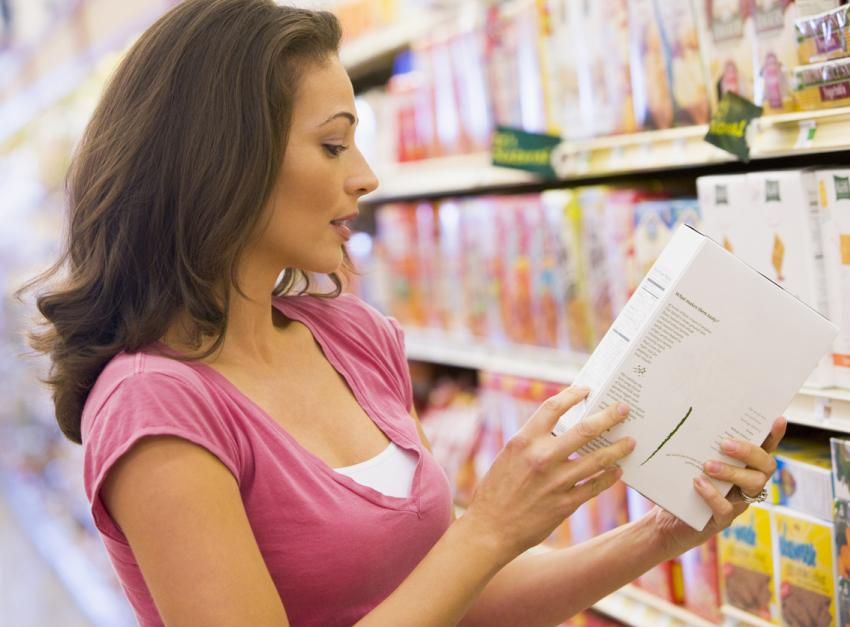
- Ali
I was teaching one of my 30 days to healthy living groups how to read the labels on their food products recently and realised that this was a much needed skill that so many people lack. One of the things I stressed was how important it is to read the label on the back and not the marketing hype that goes on the front of the pack! Here’s what to look for if you want to be educated in what you’re putting in our body.
The most important and reliable information on the label is found on the reverse in the nutrition facts and ingredients listing. Just looking at the front of the packaging with the healthy picture and huge writing claiming to be low this that or the other, is not enough. You need to see beyond the marketing and check out the facts.
Here is the information that's most essential:
Nutrition labels are usually displayed as a panel or grid on the back or side of packaging. All nutrition information is provided per 100 grams and sometimes per portion. Using the per 100g info really helps you analyse two different brands while you’re shopping as often the individual serving size will be different.
The nutritional info label includes information on energy (kJ/kcal), fat - saturated/unsaturated fat, carbohydrate, sugars, protein and salt.
Calories
Despite all the talk about carbs and fat, calories are what counts as it’s important to balance calories in with calories out – general living, workouts etc. And just as importantly is the calories per serving. Keep an eye on serving size and number of servings per container as you can easily look at a pack and think it’s one serving when the manufacturer is using 2 servings for the nutritional info hoping the numbers on the label will look better to consumers.
Dietary Fibre
Most of us don’t get even half our daily dose of fibre (need at least 30 grams daily) so keeping an eye on this can really help. It helps fill you up and keeps everything moving. To be classed as high fibre a food must contain at least 5 grams per serving. Fruits, vegetables, and whole grains provide fibre and you can supplement with a product like Arbonne Fibre Boost too.
Fat - Saturated and Unsaturated
Fat has more calories per gram than carbs or protein, and all fats have 9 calories per gramme. It’s important to check whether the fat is saturated or unsaturated. Unsaturated fats, found in foods like avocado, nuts, seeds, oily fish and vegetable oils, are better for your heart health than saturated fats found in butter, fatty meats, pastry, biscuits and cakes. Too much saturated fat can increase cholesterol, which increases your risk of coronary heart disease.
You should always choose unsaturated fats whenever possible, and limit foods with saturated and trans fats (also called trans fatty acids). Manufacturers are required to list the amount of fat by type so it’s easily spotted. If a label says partially hydrogenated or hydrogenated, that’s an indication it contains unsaturated/trans fats too.
Salt/Sodium per serving
According to NHS England adults should restrict their Saltintake to no more than 6g or 2.4g Sodiumper day - that's less than 1 teaspoon. Choosing less recessed foods , cooking from scratch and not adding salt during cooking can all help reduce your salt intake.
Sugar
Sugar the hidden issue. Not only does it addplenty of calories but it is often disguised on the label in alias terms, like high fructose corn syrup, dextrose, invert sugar. Some of the other names to look out for Honey, Syrup, Nectar, Molasses, Fruit juice concentrate
Anything that ends in ‘ose’ such as fructose, glucose, dextrose and maltoseis generally a hidden sugar.
Free sugars include all sugars that are added to foods, as well as sugars in fruit juices. Sugars are added for many reasons, including for preserving and flavouring.
If it’s listed on the ingredients list then it’s added sugar, however natural it sounds.
If you’re looking to control calories, choose foods with less than 5 grams per.
Ingredient list
Manufacturers are required to list all of the ingredients contained in the product by weight starting with the most prevalent ingredient. So you can easily see how much of an ingredient is in a jar by looking at the listing – for instance a jar of tomato sauce for pasta with tomatoes as the first ingredient lets you know that tomatoes are the main ingredient – it will often say the % too. Where a spice or herb is listed last, it means it is contained in the least amount. This information is critical for anyone who has allergies, and for prudent shoppers who want to buy more tomatoes than water etc. It’s also a great way to check own brand foods against branded foods as sometimes, though not always, the own brand food is cheaper but actually contains less of the key ingredient you think you are buying.
How do I know if a food is high in fat, saturated fat, sugar or salt?
In the UK there are guidelines to tell you if a food is high in fat, saturated fat, salt, sugar etc.
These are:
Total fat
High: more than 17.5g of fat per 100g
Low: 3g of fat or less per 100g
Saturated fat – the fat we want less of
High: more than 5g of saturated fat per 100g
Low: 1.5g of saturated fat or less per 100g
Check the nutrition information per 100g to see whether the fat content is high, medium or low.
Salt
High: more than 1.5g of salt per 100g (or 0.6g sodium)
Low: 0.3g of salt or less per 100g (or 0.1g sodium)
Sugars
High: more than 22.5g of total sugars per 100g
Low: 5g of total sugars or less per 100g
So become a label reader to know what’s in your food, improve your health and teach the next generation how to make healthier choices too.








